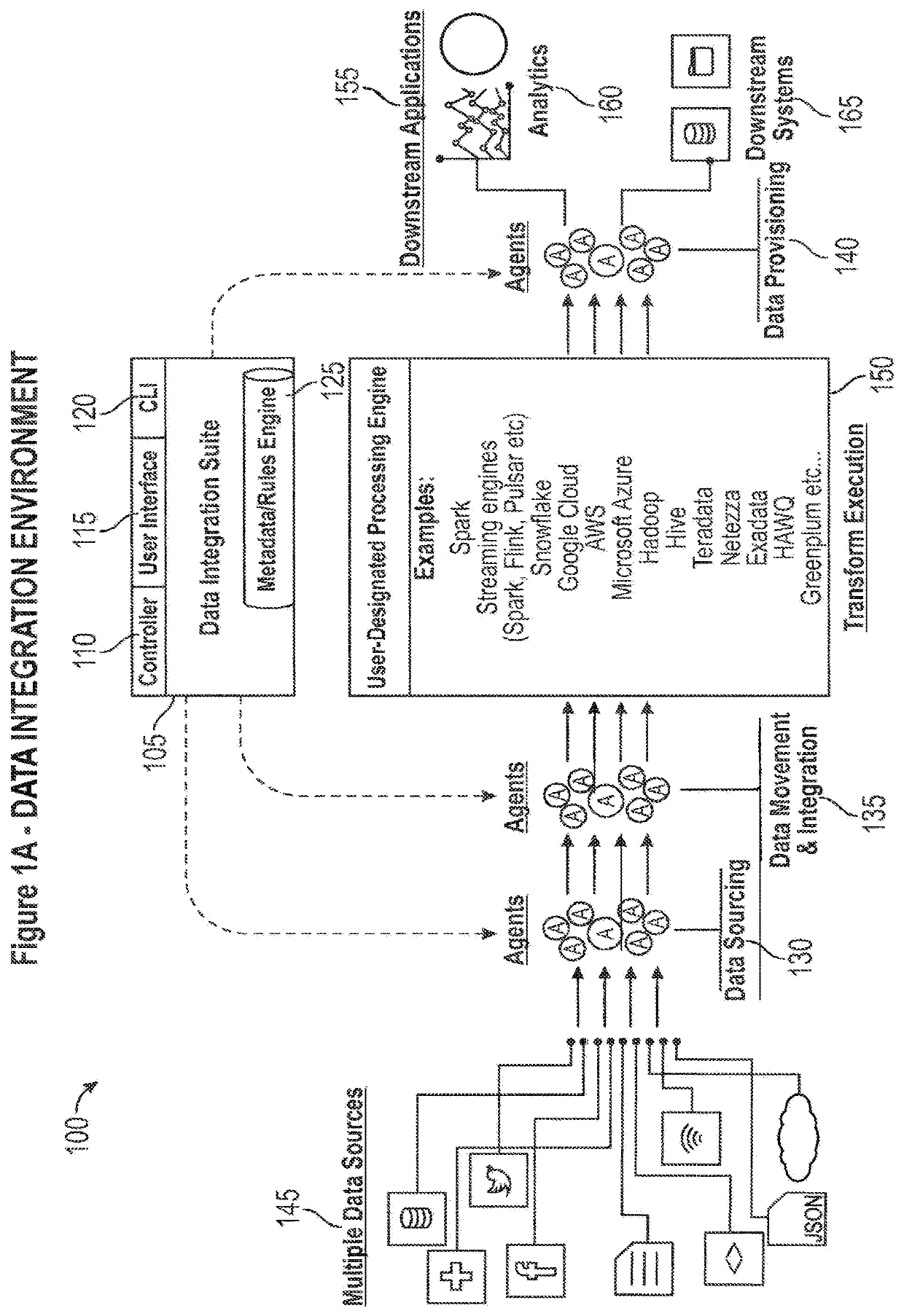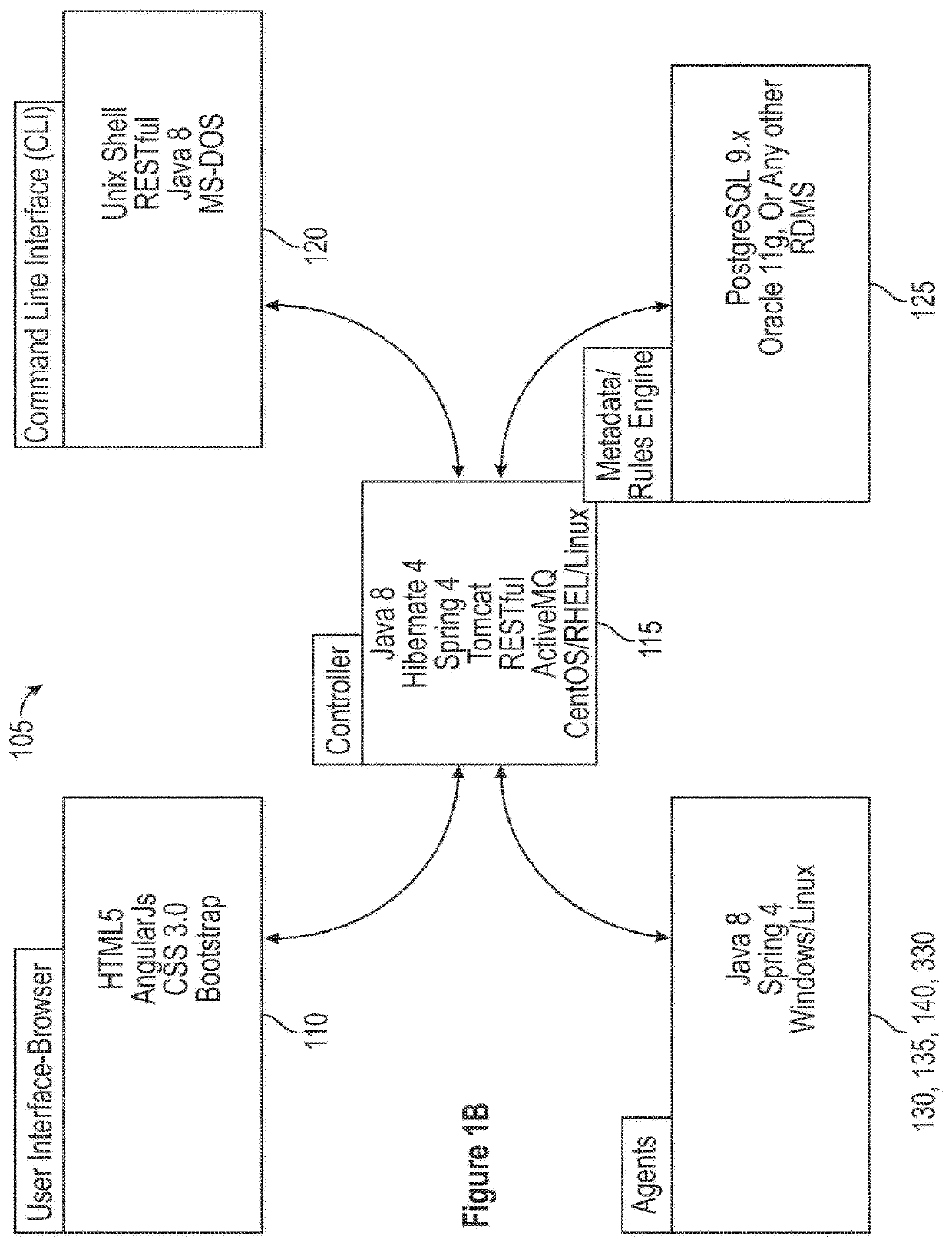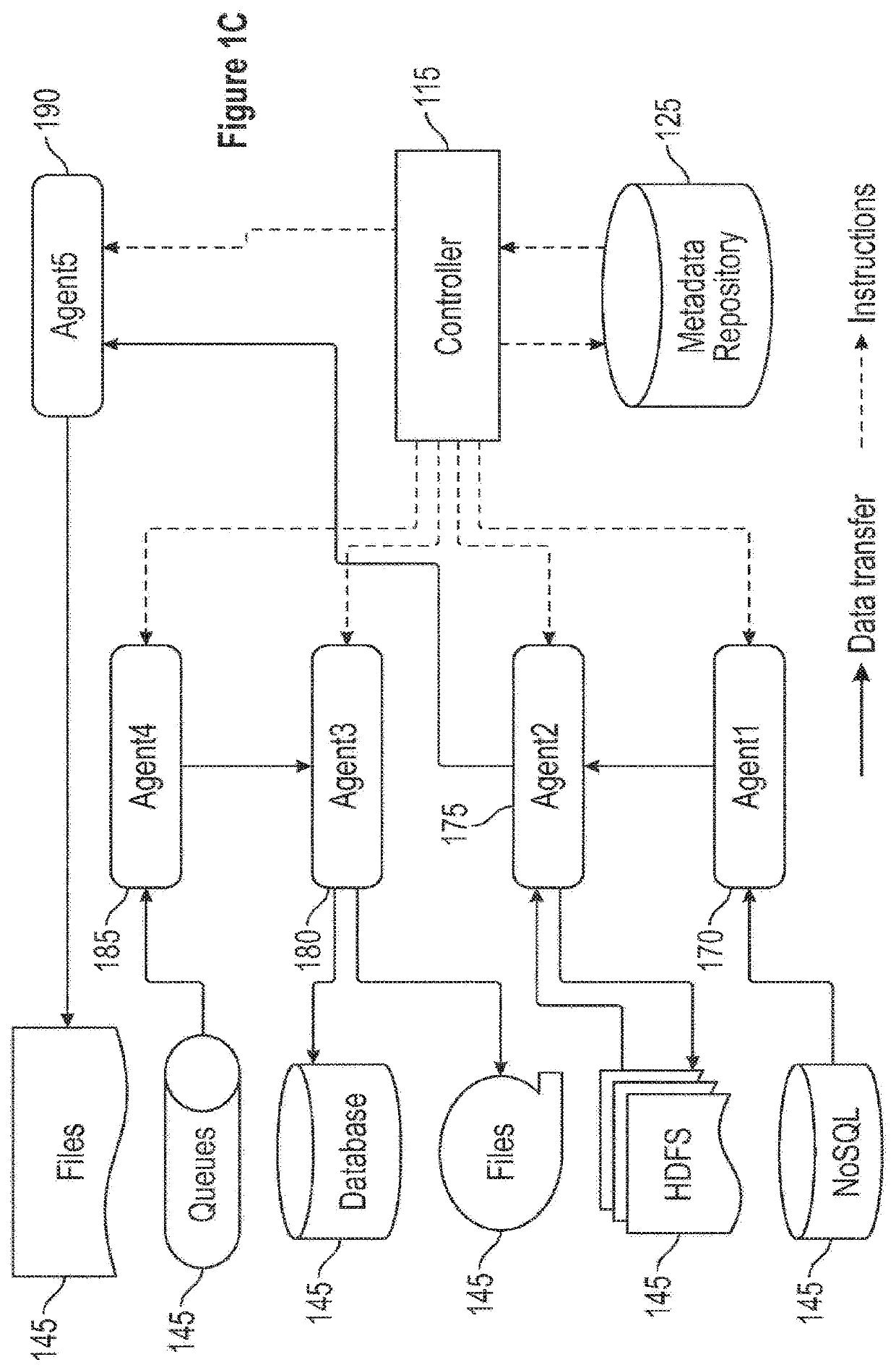Data integration for distributed and massively parallel processing environments
a data integration and processing environment technology, applied in multi-dimensional databases, database management systems, instruments, etc., can solve problems such as conflict, increasing number of challenges that are not amenable to increasing, and traditional database techniques that have not generally focused on challenges
- Summary
- Abstract
- Description
- Claims
- Application Information
AI Technical Summary
Benefits of technology
Problems solved by technology
Method used
Image
Examples
Embodiment Construction
[0036]Referring first to FIG. 1A, an embodiment of the environment 100 in which the present data integration invention operates can be better appreciated. As will be appreciated in greater detail hereinafter, data integration in accordance with the present invention comprises two related aspects: in a first aspect, a job flow must be developed based on the particular data which a user seeks to integrate, taking into account the sources of the data, their formats, and their geographical location, among other things. The development of a job flow involves development of a data flow for each such source, typically involving one or more extract / load / transform (sometimes “E / L / T” hereinafter) functions, together with any necessary E / L / T functions appropriate to move the data or results to a target. Then, in a second aspect, following the development of a job flow, the data integration job must execute efficiently, taking into account appropriate security, audit, and other data transfer co...
PUM
 Login to View More
Login to View More Abstract
Description
Claims
Application Information
 Login to View More
Login to View More - R&D
- Intellectual Property
- Life Sciences
- Materials
- Tech Scout
- Unparalleled Data Quality
- Higher Quality Content
- 60% Fewer Hallucinations
Browse by: Latest US Patents, China's latest patents, Technical Efficacy Thesaurus, Application Domain, Technology Topic, Popular Technical Reports.
© 2025 PatSnap. All rights reserved.Legal|Privacy policy|Modern Slavery Act Transparency Statement|Sitemap|About US| Contact US: help@patsnap.com



